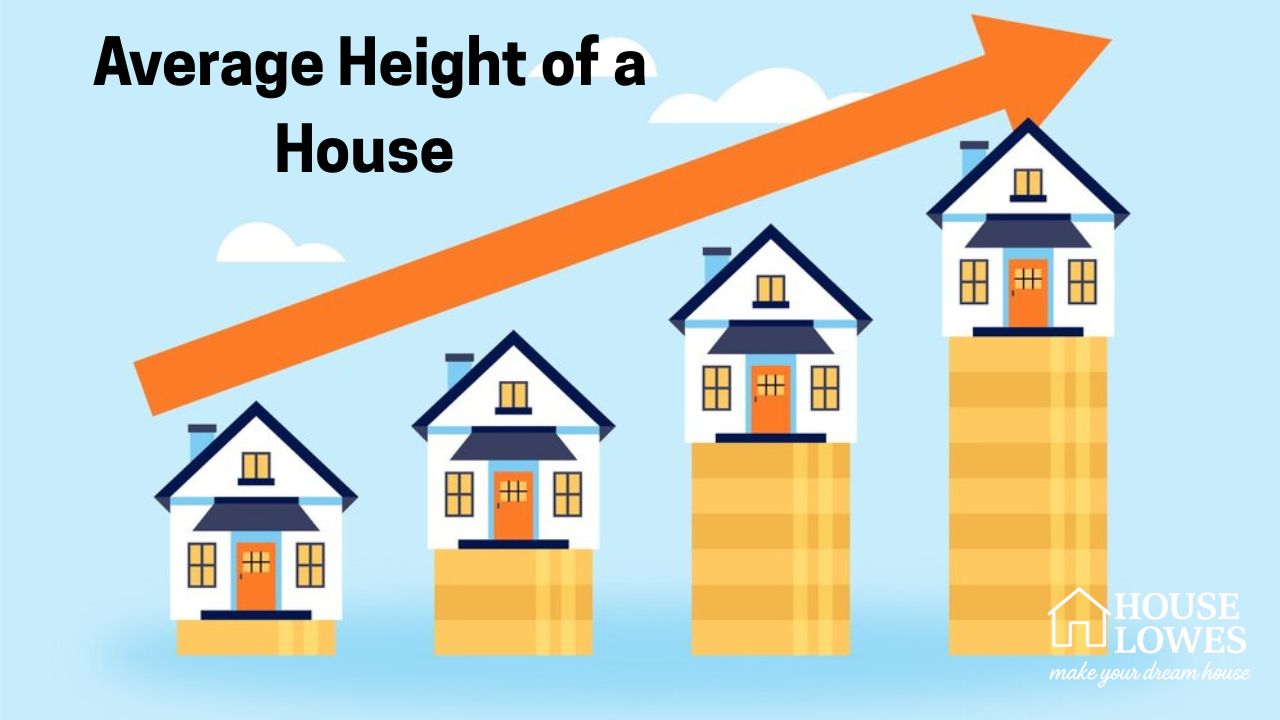Have you ever stood on your street, looked at the houses around you, and wondered just how tall they actually are? Maybe you’re trying to compare or imagine building your own home one day. Either way, understanding the average height of a house is more than just an interesting fact. It can help with planning, aesthetics, and even budgeting. Don’t worry—I’ll make sense of all those big terms while we dig into this fascinating topic together.
How Tall Is the Average House, Really?
Okay, so what exactly is the average height of a house? It depends on a few factors, like the number of floors (or “stories”) and the type of roof. But to keep things simple, here are the averages you can imagine when picturing different kinds of homes:
- A 1-story house usually measures around 10–15 feet tall. That’s like stacking one-and-a-half basketball hoops on top of each other!
- A 2-story house will typically fall between 20–25 feet high. For perspective, that’s about the height of a giraffe looking over your roof!
- A 3-story house can climb up to 33–40 feet tall, almost as high as a London double-decker bus stacked three times!
These numbers include everything from the floor to the peak of the roof, so they give you the total height of an average house from top to bottom.
Why Do Houses Vary in Height?
You might be asking, “Wait, why isn’t there one universal height for all houses?” Great question! Lots of little (and big) details come into play. Let’s break it down so it makes sense.
Ceiling Heights
Inside each house, the height of the ceilings plays a big role in a home’s overall height. The average ceiling height in houses used to be around 8 feet, but these days, modern homeowners are opting for higher ceilings, often measuring 9–10 feet. People love the open and airy vibe that taller ceilings create. But no matter what you choose, building codes (those are the rules that make sure houses are safe) often require ceilings to be no shorter than 7 feet.
The Roof
Ah, the roof—that sloped or flat topper that finishes it all off. Roofs can wildly change the average height of a house depending on their style. A flat roof might only add a few feet to the total, but something fancier like a steep gable roof (you know, the kind perfect for snow to slide off) can make a house seem much taller. The average height of a house roof can add anywhere from 3 to 10 feet depending on the design.
The Foundation
We tend to forget about the lower parts of a house, but the foundation matters! A raised foundation, like you might see in flood-prone areas, can add 1–4 feet to a house’s height. On the flip side, a concrete slab foundation will barely change the average height of a house at all.
Floors in Between
When talking about multi-story homes, it’s not just the height of each room we need to consider. When you add a second (or third) floor, you also have to account for things like the flooring materials, beams, and insulation that sit between levels. Each floor adds about an additional 1–2 feet to the total.
Comparing Average Heights Around the World
Houses aren’t just influenced by what’s trendy or convenient—they’re also shaped by local rules (like zoning laws) and cultural styles. Here’s how those factors affect house heights in different places:
- United States:
- The average height of a 1-story house is around 13 feet, while 2-story homes average about 25 feet.
- Houses in the U.S. often have taller ceilings than older homes in Europe.
- United Kingdom:
- The average height of a 2-story house, including the roof, in the UK is about 20–25 feet. Homes tend to have more compact designs, which is why they might feel cozier compared to some sprawling American houses.
- Australia:
- An average 2-story Australian house might measure close to 25–30 feet, thanks to architectural styles that incorporate wide verandas and slightly raised foundations.
What About Tiny Houses?
If you’re wondering about the average height of a tiny house, then you’re probably curious about those adorable, compact homes that are becoming super popular. These pint-sized homes typically measure 10–13 feet tall, often designed to fit on trailers or smaller plots of land. Despite their height, they make the most of every inch by using clever loft spaces and storage systems.
Gutter Heights, Wall Heights, and More
We can’t forget some of the important details that also add meaning to a house’s height:
- Gutters (those handy water-channeling systems) are often installed at about 8–10 feet off the ground, giving you an idea of the height of the lowest part of the roof line.
- House walls range in height, but a safe bet for the average height of a house wall is around 8–10 feet.
- Inside, the average height of a room in a house sticks to the standard ceiling heights we talked about earlier.
Why Does House Height Matter?
Knowing the average height of a house isn’t just fun trivia; it can affect your day-to-day life. Think about it:
- Sizing Your Ladder:
Need to clean your gutters or fix a high window? The average gutter height of a 2-story house can mean needing a ladder at least 20–25 feet tall! - Energy Efficiency:
Tall ceilings might feel luxurious, but they can make heating and cooling a house more expensive. The greater the height, the more air your HVAC system needs to account for. - Design Decisions:
The height of a house affects everything from the pitch of its roof to the size of its windows. Taller houses allow for more dramatic windows and larger doors, which can make the space feel brighter and more spacious. On the flip side, taller designs often mean higher building costs. - Regulations:
Did you know that some areas have strict zoning laws about how tall houses can be? For example, new subdivisions or neighborhoods often enforce limits to keep homes from blocking each other’s sunlight or views. This is especially important to know if you’re trying to figure out the average height of a 2-story house including the roof in the UK, for example, where historic areas might have stricter rules than modern developments.
Final Thoughts on Average House Heights
Whether you’re thinking about building your dream home, curious about how houses compare globally, or just trying to impress your friends with some house-height knowledge, now you’re armed with the info. From the height of an average house in feet to the impact of roofs, ceilings, floors, and foundations, every detail adds to this super-interesting equation.
Next time someone asks you, “What is the average height of a two-story house?” you can confidently tell them it depends—but usually between 20 and 25 feet! But remember, knowing the numbers is just the beginning. It’s what you do with the knowledge (and whether you can reach the gutters!) that counts.








